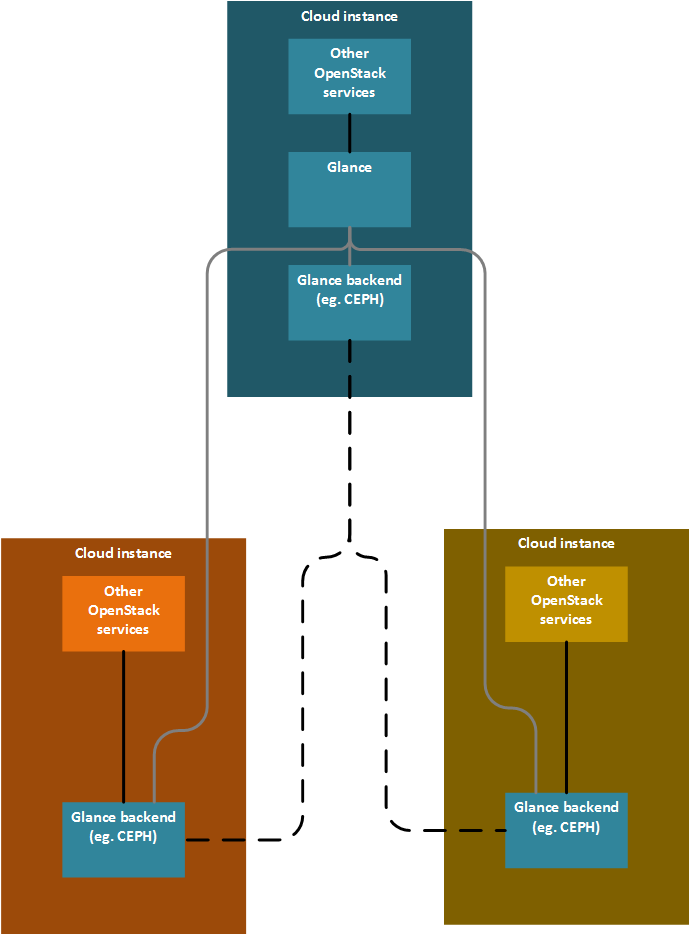Difference between revisions of "Image handling in edge environment"
| Line 8: | Line 8: | ||
** Is it safe to store database credentials in the far edge? | ** Is it safe to store database credentials in the far edge? | ||
== Several Glances with an independent syncronisation service == | == Several Glances with an independent syncronisation service == | ||
| − | Every edge cloud instance have its Glance instance. There is a synchronisation service what is able to intrucr the Glances to do the synchronisation. The synchronisation of the image data is the responsibility of the backend (eg.: CEPH). | + | Every edge cloud instance have its Glance instance. There is a synchronisation service what is able to intrucr the Glances to do the synchronisation. The synchronisation of the image data is the responsibility of the backend (eg.: CEPH).<br/> |
| + | [[File:Glance-edge-architecture-synch-service.PNG]]<br/> | ||
Revision as of 23:20, 22 May 2018
Architecture options for Glance
This page contains a summary of the Vancouver Forum discussions. Full notes of the discussion are in here.
One Glance with multiple backends
There is one central Glance what is capable to handle multiple backends. Every edge cloud instance is represented by a backend. The syncronisation of the image data is the responsibility of the backend (eg.: CEPH). OpenStack services in the edge cloud instances are using the images in the Glance backend directly.

- Concerns
- Network partitioning tolerance?
- Is it safe to store database credentials in the far edge?
Several Glances with an independent syncronisation service
Every edge cloud instance have its Glance instance. There is a synchronisation service what is able to intrucr the Glances to do the synchronisation. The synchronisation of the image data is the responsibility of the backend (eg.: CEPH).

